Definition Of Chicken And İts Importance
Chicken is both a farm animal and a popular source of meat consumed by people worldwide. It belongs to the bird family and is closely related to pheasants and quails. Chickens were originally domesticated for cockfighting and later for egg and meat production in many parts of the world including Asia and Europe. Chickens come in different varieties, shapes, sizes, and colors, making them an interesting and vital part of the agricultural industry.
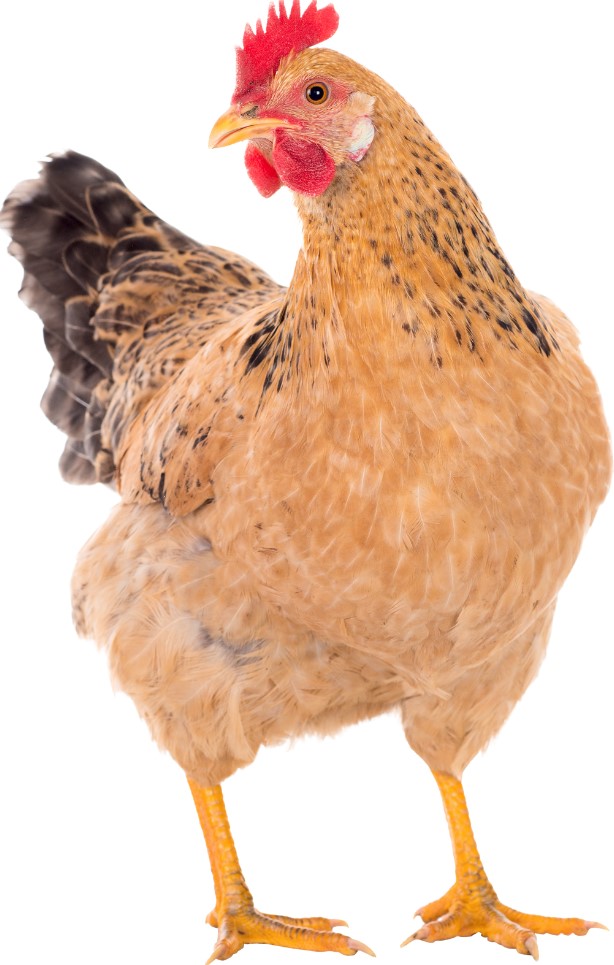
- Broilers: These are the most commonly raised meat chickens and are primarily raised for their meat. They are characterized by their fast growth rate, large size, and white feathers.
- Layers: These chickens are bred to produce large quantities of eggs for consumption. They are typically smaller in size and have brown feathers.
- Dual-Purpose: As the name suggests, these chickens are bred for both meat and egg production, making them a versatile addition to any poultry farm.
Chickens are beneficial to farmers and consumers alike. They can be raised in small spaces and can convert organic waste into valuable manure for fertilizing crops. Chickens are also known for their disease-fighting abilities, meaning they can help to keep pests and vermin out of the fields. In addition, chicken meat and eggs are a good source of protein and other essential nutrients, making them a popular and affordable dietary staple for many.
| Benefits of Raising Chickens | Benefits of Consuming Chicken |
|---|---|
| Provides fresh eggs and meat | Good source of protein |
| Converts organic waste into fertilizer | Easy to prepare and affordable |
| Controls pests and vermin | May help to reduce the risk of heart disease and cancer |
| Can be raised in small spaces | Contains vitamins and minerals such as vitamin B6 and zinc |
To sum up, chickens are an integral part of the agricultural industry and play a vital role in providing a sustainable source of protein for people worldwide. They are easy to raise and maintain, and their meat and eggs offer numerous health benefits to consumers. It’s no wonder why chickens are considered a valuable and worthwhile addition to any farm or household.
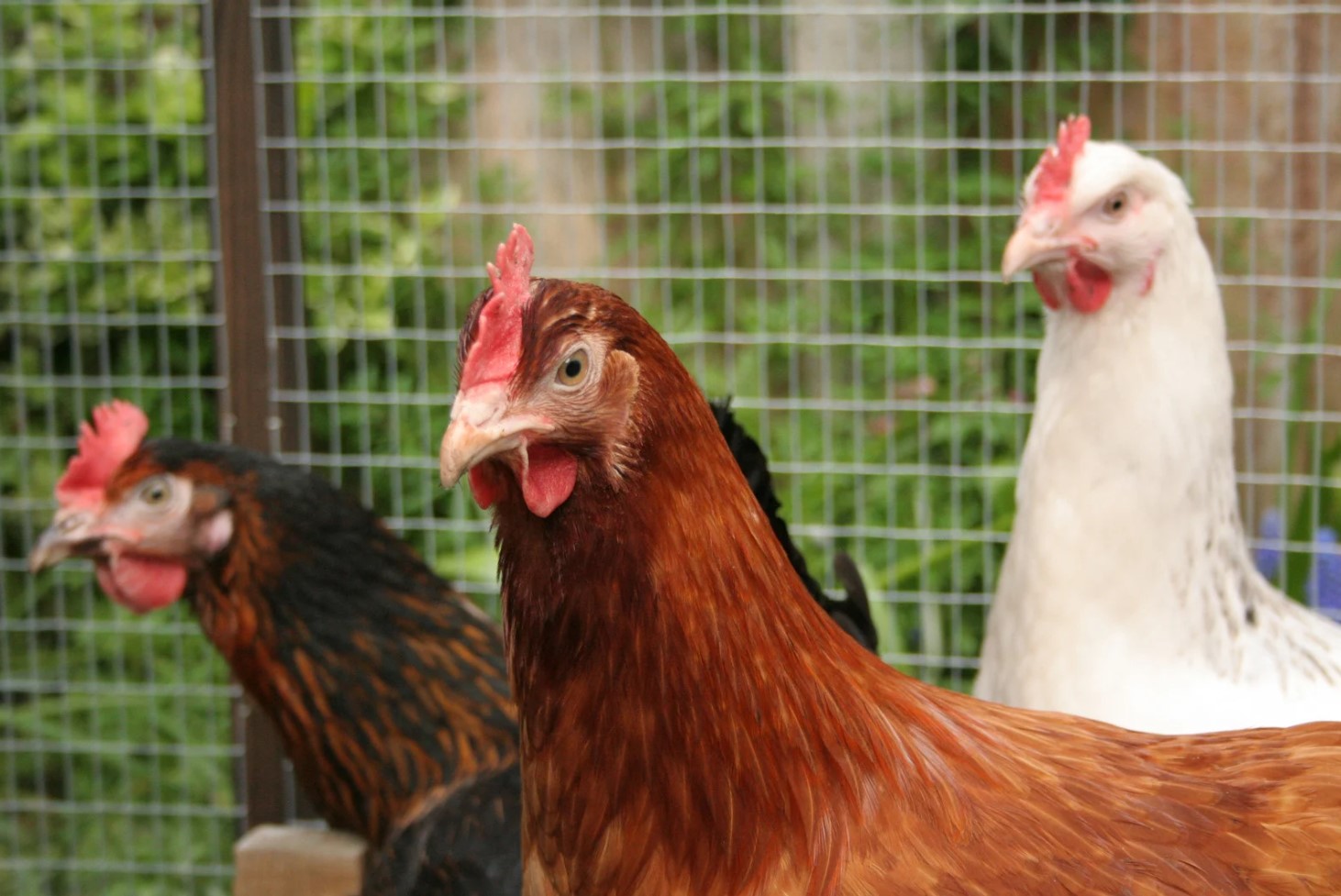
Tour The Different Varieties Of Chicken
There are many different types of chickens around the world, and each breed has its unique features and characteristics. In this blog, we will “Tour The Different Varieties Of Chicken” to help you understand the different breeds of chickens.
Firstly, let’s focus on the “Rhode Island Red Chicken.” This breed is one of the most renowned chickens because of their ability to produce large brown eggs. These chickens originated in Rhode Island and were bred for their ability to survive the harsh weather conditions in their region. They have a rust-colored plumage, which makes them stand out from other breeds.
- White Leghorn chicken:
- This breed is known for its egg-laying abilities and is often used in commercial egg production.
- They have a slender body shape with white feathers.
- Plymouth Rock Chicken:
- This breed is famous for its calm temperament, meat production, and egg-laying capabilities.
- They have black and white-striped feathers, and their feathers have a laced pattern.
Finally, let’s consider the “Silkie Chicken.” This breed is known for its unique appearance and has fluffy feathers that look almost like fur. The silkie chicken is a fair breeder and is a perfect chicken to raise for those who want to have them as pets rather than for commercial purposes.
| Breed | Plumage | Uses |
|---|---|---|
| White Leghorn | White feathers | Commercial egg production |
| Plymouth Rock | Black and white-striped feathers | Meat production and egg-laying capabilities |
| Silkie Chicken | Fluffy feathers that look almost like fur | Perfect pet chicken |
In conclusion, as you can see, there’s no one-size-fits-all when it comes to chicken breeds, and each type of chicken has its unique abilities and characteristics. Whether you’re looking to raise chickens for commercial or pet purposes, understanding the different varieties of chicken can help you select which breed is best suited for your needs.
White Leghorn Chicken – History And Development
White Leghorn chicken is a breed that originated from Italy back in the early 1800s. This breed, as the name suggests, is white in color and was originally bred for its prolific egg-laying ability. Leghorns gained popularity in the United States and became the most widely kept breed of chicken. The breed became so popular in the US that it formed the basis of the country’s commercial egg industry. Leghorns are one of the most common breeds raised by backyard poultry keepers and commercial egg producers today.
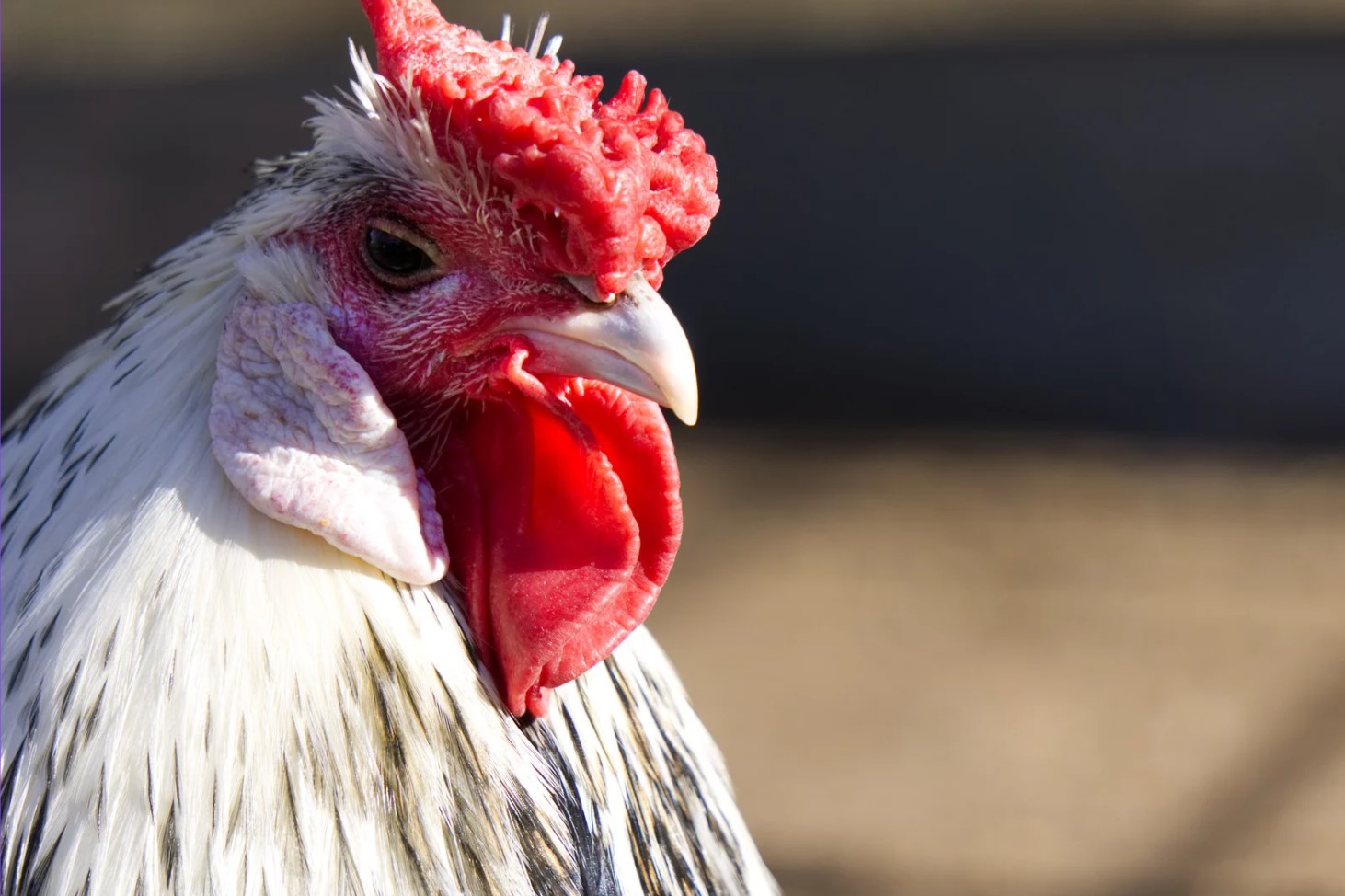
The development of White Leghorn chickens was a result of selective breeding from Mediterranean breeds such as Minorca, Andalusian, and Leghorn in the early 19th century. The first Leghorns arrived in America in the 1820s, and during the 1900s, the demand for Leghorns increased due to their superior egg-laying ability. Their prolific egg production made them the preferred choice for commercial egg farmers.
White Leghorns are small, smart, active, and very hardy birds. They have a slim body and a long back with a large and full tail. Leghorns have white ear lobes, red wattles, and a small red comb. Some Leghorn subspecies have yellow or black skin. They have long and strong legs that are feather-free, which helps them to stay cool in hot weather. Despite their small size, Leghorns are known for their excellent egg-laying capabilities and can lay approximately 280-320 eggs per year.
- The White Leghorn breed was developed for egg production with quality in mind.
- Leghorn hens are known to be excellent layers, achieving a laying rate of up to 7 eggs per week.
- The breed is hardy and easy to keep, making it a perfect breed for backyard poultry keepers.
| Feature | Description |
|---|---|
| Color | White with some variations in subspecies. |
| Personality | Active and high-strung, Leghorns are entertaining and curious birds. |
| Egg Production | On average, Leghorns lay between 280-320 eggs annually. |
| Size | On average, Leghorns weigh between 4-5lbs, with roosters being slightly larger than hens. |
The White Leghorn chicken has an important place in the history and development of the chicken industry. It is a versatile breed that is ideal for both commercial and backyard egg farming. The Leghorn breed has been instrumental in helping to create the modern egg-laying industry with its impressive egg production and quality. The breed remains popular today, and its hardiness, ease of care, and excellent egg-laying capabilities make it a perfect choice for any chicken enthusiast.
Rhode Island Red Chicken – Development And Uses
The Rhode Island Red chicken is one of the most common chicken breeds around the world. This poultry bird originated in Rhode Island as a result of rigorous breeding practices in the late 19th century. Its striking red plumage, muscular build and docile temperament quickly caught the attention of poultry farmers globally. The breed was first accepted by the American Poultry Association in 1904 and became famous for its qualities in both meat and egg production.
The Rhode Island Red chicken has a solidly built frame, broad back and deep breast that makes it perfect for meat production. It is known for its robust flavour and is a favourite among chefs and meat lovers. These chickens eat almost anything and are relatively easy to care for. Rhode Island Reds lay brown eggs and produce prolifically, making them a valuable addition to any egg-producing farm or backyard chicken coop.
Rhode Island Reds are also used for ornamental purposes because of their stunning appearance. They have gorgeous red feathers that glisten in the light, often with a black tail and wings. They are among the most popular chicken breeds at poultry shows and can be kept as pets. Additionally, they are well-behaved around children and other animals, making them excellent family companions.
| Characteristics of Rhode Island Red Chicken |
|---|
| Weight: Males weigh around 3.9 kg (8.5 lbs) and females weigh around 3.2 kg (7 lbs). |
| Egg Size: Large |
| Egg Production: Rhode Island Reds have a high egg production rate and lay between 250-300 eggs per year. |
| Meat Production: The Rhode Island Red chicken is a dual-purpose breed, producing both eggs and meat, but is more commonly used for meat production. |
| Temperament: They are a docile and friendly breed, making them ideal for backyard flocks or for families with young children. |
Rhode Island Red chickens are a great choice for both small scale and commercial chicken farms. They have been extensively studied and improved upon over the years, resulting in a reliable and versatile breed. With their robust and friendly nature, exquisite appearance, and dual-purpose status, these chickens are a popular choice for farmers and pet owners alike.
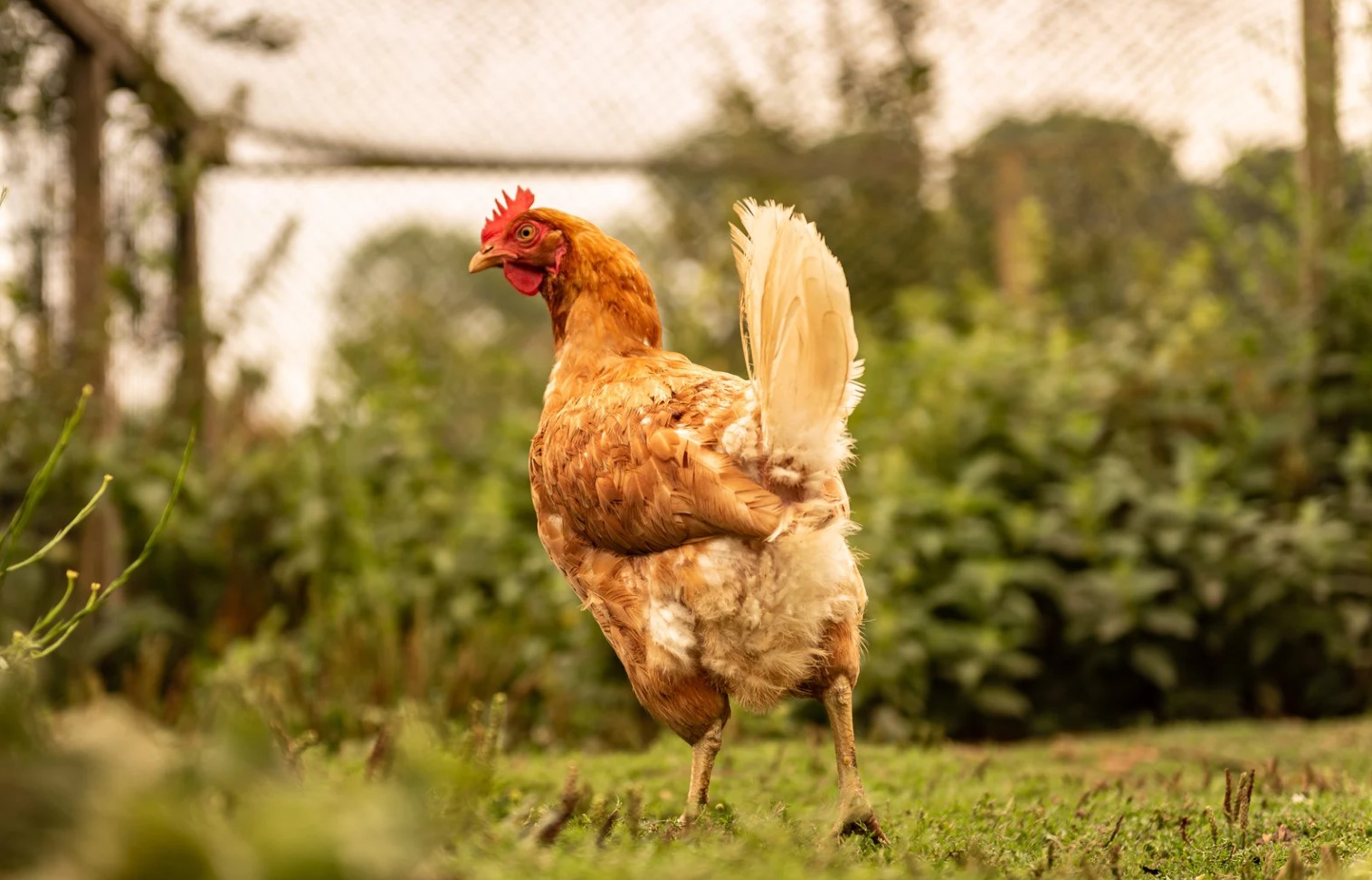
Plymouth Rock Chicken – History And Characteristics
When it comes to chicken breeds, Plymouth Rock is a name that frequently comes up. This particular breed of chicken has a rich history and fascinating characteristics that make it a favorite amongst farmers and chicken enthusiasts.
History: The Plymouth Rock chicken was first bred in the United States in the mid-19th century. It originated in Massachusetts, and its creation was a result of breeding Dominique hens and Black Java roosters. This breed quickly became popular amongst farmers due to its temperament, hardiness, and excellent egg-laying capabilities. It was even given the nickname “The Plymouth Rock Star” due to its fame.
- Characteristics: Plymouth Rock chickens are medium to large-sized birds, with males weighing around 9.5 pounds and females around 7.5 pounds. They have a distinctive black and white striped pattern, with white feathers around their head and neck. Plymouth Rock chickens are known for their docile, friendly temperament, and they are great birds for families with children. They are also hardy birds, able to withstand cold temperatures and harsh weather conditions.
- Uses: Plymouth Rock chickens are a dual-purpose breed, meaning they are bred for both their meat and eggs. They are excellent egg layers, with females laying an average of 200-280 brown eggs per year. Their meat is also highly prized, with a delicious flavor and tender texture.
| Pros | Cons |
|---|---|
|
|
Overall, the Plymouth Rock chicken is a favorite amongst farmers and chicken enthusiasts alike. Its rich history, friendly temperament, excellent egg-laying capabilities, and delicious meat make it a popular breed for anyone looking to add chickens to their backyard farm or homestead.
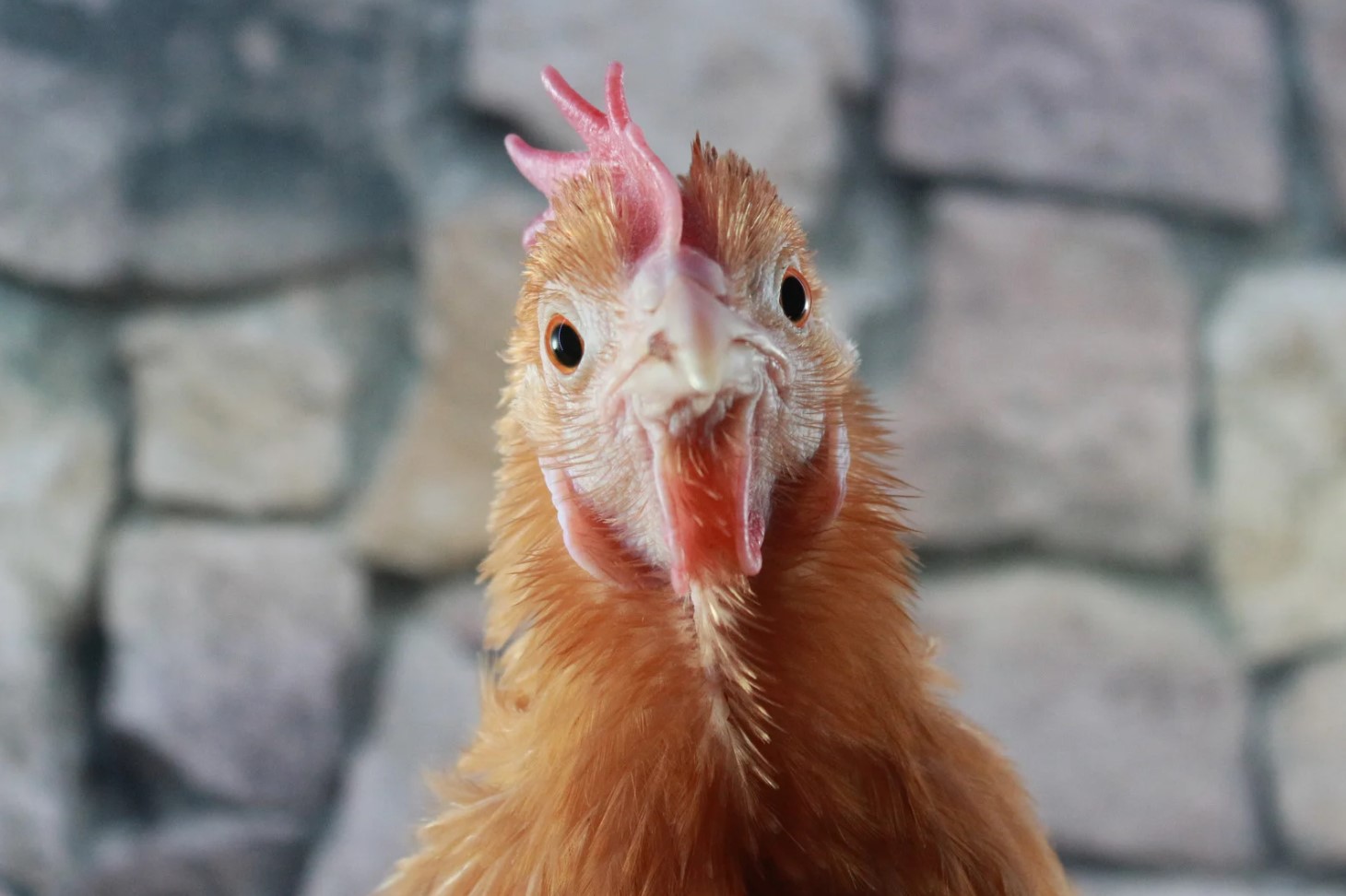
Chicken Breeding – How To Breed Different Varieties
When it comes to chicken breeding, there are a few things that you need to consider in order to successfully breed different varieties of chickens. Firstly, you need to decide on the breed that you want to breed, as different breeds require different care and have different characteristics. Once you have decided on the breed, you should look for a good quality breeding stock.
You can start by selecting the best rooster and hen from your flock. You should choose birds that have good genetics, are healthy, and have desirable traits such as good egg-laying abilities, high meat yield, and docile temperament. You should also take into consideration their color and feather pattern, as well as their overall conformation.
- Next, it is important to provide your breeding stock with a healthy and balanced diet. This will help to ensure that they are healthy and can produce healthy offspring. You can provide them with a good quality chicken feed and supplement their diet with fresh fruits and vegetables.
- You should also ensure that your breeding stock has adequate space to move around and exercise. This will help to prevent them from becoming overweight and will also promote healthy egg production.
- To help ensure the success of your breeding program, it is important to keep careful records of your breeding stock. This will help you to keep track of which birds are producing the best offspring, and will also help you to avoid breeding closely related birds, which can lead to inbreeding and genetic problems.
Overall, breeding different varieties of chickens can be a rewarding experience, but it does require careful planning and attention to detail. By selecting the best breeding stock, providing them with a healthy diet and environment, and keeping careful records, you can improve the genetic quality of your flock and produce healthy and desirable offspring.
Chicken Nutrition – Feeding Different Breeds
Feeding your chickens a nutritious diet is one of the most important things you can do to ensure their health and well-being. Each breed of chicken has unique nutritional needs that must be met in order for them to thrive. The right balance of vitamins, minerals, protein, and carbohydrates is essential for egg production, growth, and overall health.
When considering the diet of your chickens, it’s important to understand the different types of feed available. Commercial feeds are typically formulated to meet the nutritional needs of a wide variety of breeds, but may be lacking in specific nutrients needed by certain breeds. Organic feeds, on the other hand, are free from pesticides and other harmful chemicals, but may be more expensive.
- Layer breeds, like Leghorns and Rhode Island Reds, require a diet high in protein and calcium to support egg production. Layer feeds typically have a higher calcium content to support strong eggshells, as well as added protein from sources such as soybeans or fish meal.
- Meat breeds, like Cornish Cross, require a high energy diet to support their rapid growth. A diet high in protein and fat is essential for meat breeds, with added ingredients like corn, sorghum, and barley.
In addition to commercial feeds, there are several other options for feeding your chickens. Scratch grains, like corn and oats, can be used as a supplement to commercial feeds, providing extra energy and helping to keep your chickens entertained. Fresh fruits and vegetables, like leafy greens and berries, can be a healthy and tasty addition to your chickens’ diet.
| Type of Chicken | Required Nutrients | Recommended Feeds |
|---|---|---|
| Layer breeds | High protein and calcium | Layer feeds |
| Meat breeds | High energy, protein, and fat | Meat bird feeds |
When it comes to feeding your chickens, it’s important to do your research and choose the right feed for your specific breed. Whether you opt for commercial feeds or natural supplements, providing a balanced and nutritious diet is key to keeping your chickens healthy, happy, and productive.
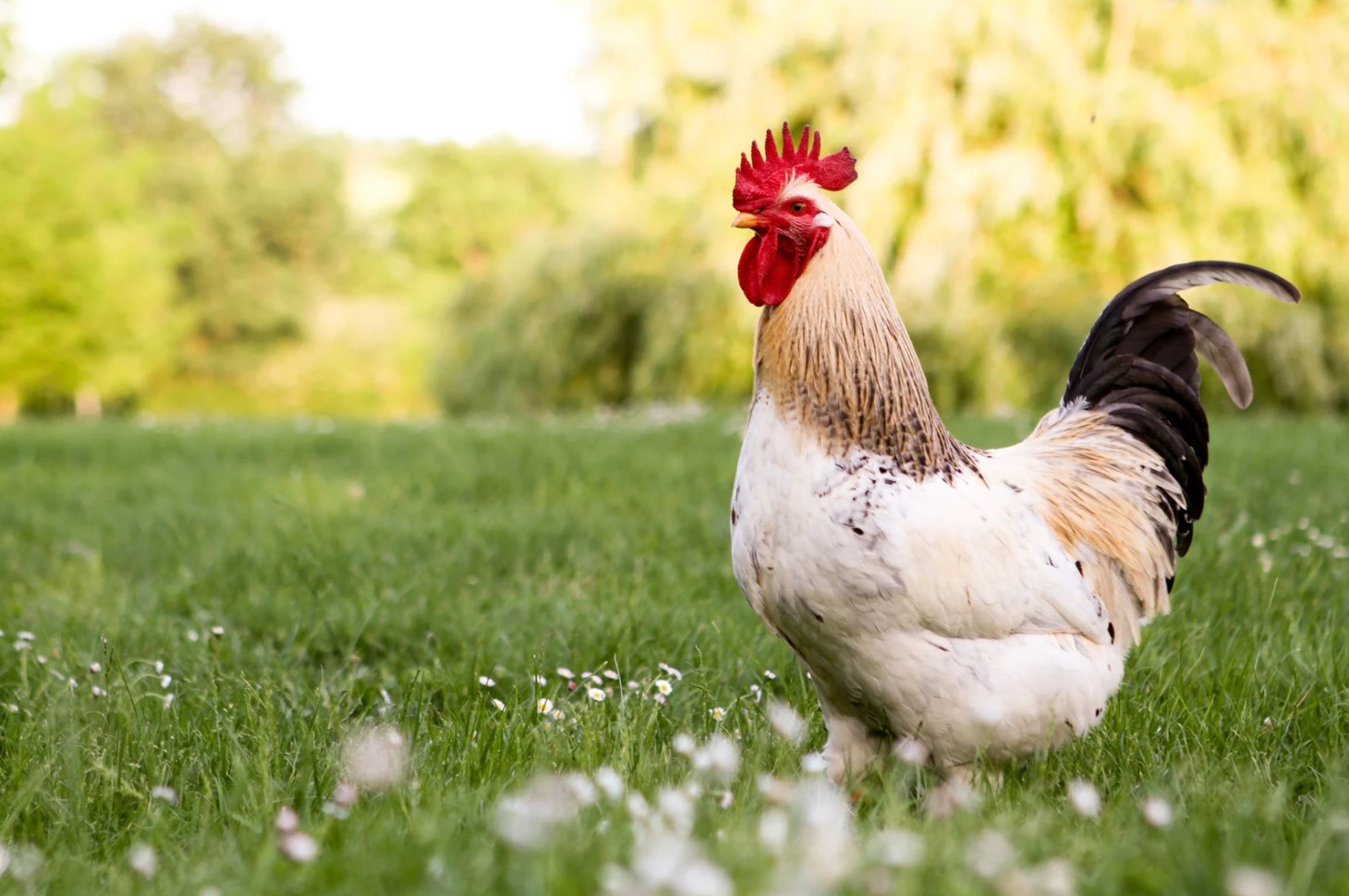
Chicken Health – Common Problems And Prevention
Chicken Health – Common Problems And Prevention
Keeping chickens is a rewarding experience. They are easy to take care of, and all they require is food, water, and a suitable living space. However, just like any animal, chickens can get sick. Recognizing the signs of sickness and taking preventive measures can keep your flock healthy and happy. Let’s discuss some common problems that can affect chicken health and ways to prevent them.
- Coccidiosis: This is a parasitic disease that affects the intestinal tract of chickens. It can be caused by poor sanitation and overcrowding. Symptoms include diarrhea, blood in feces, and lethargy. To prevent coccidiosis, keep the coop clean and dry, and avoid overcrowding. Treat infected chickens with medication.
- Marek’s disease: This is a viral disease that affects the nervous system of chickens. Symptoms include paralysis, weight loss, and tumors. The virus spreads through feather dander and can survive in the environment for months. To prevent Marek’s disease, vaccinate chicks and keep the coop clean and dry.
- Respiratory infections: These are bacterial infections that affect the respiratory system of chickens. Symptoms include coughing, sneezing, and nasal discharge. They can be caused by poor ventilation and overcrowding. To prevent respiratory infections, keep the coop well-ventilated and avoid overcrowding. Treat infected chickens with antibiotics.
| Common Problems | Prevention Tips |
|---|---|
| Coccidiosis | Keep the coop clean and dry, avoid overcrowding, and treat infected chickens with medication |
| Marek’s disease | Vaccinate chicks and keep the coop clean and dry |
| Respiratory infections | Keep the coop well-ventilated and avoid overcrowding, and treat infected chickens with antibiotics |
As you can see, many common problems that affect chicken health can be prevented with good management practices. Keep your coop clean and dry, provide adequate space and ventilation, and vaccinate your chicks. If your chickens do get sick, recognize the symptoms early and treat them promptly. A healthy flock will provide you with plenty of eggs and enjoyment for years to come.
Importance Of Chicken Confinement
Chicken farming is an activity that requires proper management for it to be successful. One of the essential aspects of chicken farming is the confinement of the birds. Confinement involves keeping the chickens in an enclosed area, away from predators and external factors that may endanger their lives. The confinement of the birds plays a crucial role in promoting their health, welfare, and productivity. A well-managed confinement system can provide a conducive environment for the birds to lay eggs, grow and develop as desired.
There are different types of chicken confinement systems, depending on the number of birds, available space, and management practices. The most common types of confinement systems include free-range, semi-intensive, and intensive systems. The free-range system provides the birds with ample space to roam around, access to natural light and fresh air, and a conducive environment for natural behavior. The semi-intensive and intensive systems, on the other hand, involve the confinement of the birds in closed spaces, such as cages, sheds, or barns. These systems are common in commercial chicken farming and are ideal for large-scale production.
Chicken confinement plays a significant role in the overall health and welfare of the birds. A well-functioning confinement system can help prevent the spread of disease, parasites, and pests that may harm or kill the birds. It also helps protect the birds from extreme weather conditions, such as heat or cold, that may negatively affect their growth and development. A properly managed confinement system can also provide adequate lighting, ventilation, and temperature control, which are essential for the birds’ comfort and health.
- Key Points:
- Confinement involves keeping chickens in a closed or restricted space.
- There are different types of confinement systems, including free-range, semi-intensive, and intensive systems.
- A well-managed confinement system promotes the birds’ health, welfare, and productivity.
- Confinement helps prevent the spread of disease and parasites, protects the birds from extreme weather conditions, and ensures proper lighting, ventilation, and temperature control.
In conclusion, chicken confinement is an essential aspect of chicken farming that cannot be ignored. The confinement of the birds provides a safe and conducive environment for their growth and development, as well as promoting their overall health and welfare. A well-managed confinement system can also help prevent the spread of disease and parasites, protect the birds from extreme weather conditions, and ensure proper lighting, ventilation, and temperature control. It is therefore important for chicken farmers to consider the different confinement systems available and choose the one that best suits their needs and management practices.
Raising Chickens – Benefits And Tips
Raising chickens can be a rewarding experience for individuals of all ages. It not only provides fresh eggs and meat, but also teaches life skills and responsibility. Before embarking on this venture, it’s important to understand the benefits and tips for raising chickens.
Benefits:
- Self-sustainable food source
- Reduction in food waste through composting
- Increased garden fertilization through chicken manure
- Teaches responsibility and life skills
- Provides a connection to nature and the environment
Tips:
- Research and choose the appropriate breed for your climate and lifestyle
- Provide a safe and secure chicken coop to protect against predators
- Regularly maintain and clean the coop to ensure a healthy living environment
- Implement a balanced diet for the chickens through a mix of commercial feed and fresh produce
- Monitor and address any health issues promptly
- Ensure adequate space for the chickens to roam and forage
- Educate and inform yourself on local regulations and ordinances regarding chicken ownership
Overall, raising chickens can be an enjoyable and fulfilling hobby for individuals and families alike. By following these tips and understanding the benefits, it can also be a beneficial addition to a self-sustainable and environmentally conscious lifestyle.
Organic Farming Of Chickens
Organic farming is a method of farming that aims to minimize the use of synthetic chemicals such as fertilizers and pesticides. This method of farming aims to be more sustainable and environmentally friendly. Organic farming of chickens is becoming an increasingly popular trend due to the health benefits of consuming organic chicken meat and eggs. Organic farming of chickens involves providing the chickens with a healthy and natural environment in which they can grow and produce eggs. Organic farming also involves feeding the chickens with organic feed that is free from synthetic chemicals.
- One of the main benefits of organic farming of chickens is the reduced use of synthetic chemicals. This means that organic chicken meat and eggs are free from harmful chemicals that may be present in conventionally farmed chickens. This makes them a safer and healthier option.
- Another benefit of organic farming of chickens is that it is more sustainable and environmentally friendly. Organic farmers use techniques such as crop rotation and natural pest control to maintain the health of the soil and surrounding environment. This helps to reduce the environmental impact of farming.
- Organic farming of chickens also involves providing the chickens with a natural environment in which they can grow and produce. This means that they are free to roam outdoors and engage in natural behaviors such as dust bathing and foraging. This helps to improve their overall health and well-being.
| Organic farming practices for chickens |
|---|
| Providing chickens with access to outdoors |
| Feeding chickens with organic feed |
| Using natural pest control |
| Practicing crop rotation |
Overall, organic farming of chickens is a sustainable and healthy method of farming that is gaining popularity among consumers. This method of farming aims to provide chickens with a natural environment in which they can grow and produce, while also reducing the use of harmful chemicals in farming. Consumers who are looking for a healthier and more environmentally friendly option can opt for organic chicken meat and eggs.
Chicken Slaughter – Procedures And Regulations
Chicken Slaughter – Procedures And Regulations
It is a well-known fact that chicken meat is one of the most consumed meats in the world. However, the process of obtaining this meat is not as simple as it may seem. Chicken slaughter is an important aspect of the meat industry and it is important to follow strict procedures and regulations to ensure that the meat is safe for human consumption.
The first step in chicken slaughter is to ensure that the chickens are healthy and disease-free. This involves regular inspections of the chickens and their housing conditions. Once this has been established, the chickens are transported to the processing plant where they are stunned. The stunning process ensures that the chickens are unconscious and unable to feel any pain during the slaughter process.
After the chickens have been stunned, they are hung upside down and their throats are slit. This allows the blood to drain out of the chicken’s body. The next step is to scald the chickens to remove the feathers. This is done by dipping the chickens into hot water for a few seconds. The feathers can then be easily removed by hand or by using a machine.
- It is important to note that there are strict regulations in place regarding the use of water during the scalding process. The water must be free from any contaminants that may cause the chicken meat to become unsafe for human consumption.
The next step is to eviscerate the chicken. This involves removing the internal organs, such as the heart, liver, and intestines. The internal organs must be carefully removed to avoid contamination of the meat. Once the internal organs have been removed, the chicken is washed and chilled to reduce the risk of bacterial growth.
| Regulations | Procedures |
|---|---|
| There are regulations in place regarding the use of water during the scalding process. | Chicken must be scalded with water that is free from contaminants to avoid the meat becoming unsafe for human consumption. |
| Internal organs must be carefully removed to avoid contamination of the meat. | The internal organs must be removed with care and attention to avoid contaminating the meat. |
| Chicken must be washed and chilled to reduce the risk of bacterial growth. | The chicken must be washed and chilled immediately after evisceration to reduce the risk of bacterial growth. |
It is important to follow these procedures and regulations to ensure that the chicken meat is safe for human consumption. Failure to follow these guidelines can result in foodborne illnesses and recalls of chicken products.
Overall, chicken slaughter is an important aspect of the meat industry and it is important to follow strict procedures and regulations to ensure that the meat is safe for human consumption.
Chicken Meat – Preparation And Cooking
Chicken is a popular meat that is consumed in many parts of the world. It is valued for its high protein content, and the fact that it is leaner than many other meats. Despite its popularity, not everyone knows how to properly prepare and cook chicken to ensure that it is safe to eat and delicious. In this blog post, we will discuss some tips and tricks for preparing and cooking chicken meat.
Tip #1: Always choose fresh chicken from a reputable source. Look for chicken that has firm, pink flesh and no signs of discoloration or unpleasant odor. Check the sell-by date to make sure that it is not past its prime.
- Tip #2: To reduce the risk of contamination, always handle chicken with clean hands and on a clean surface. Wash your hands and any utensils or surfaces that come into contact with raw chicken with hot soapy water after use.
- Tip #3: When preparing chicken, make sure that it is cooked to an internal temperature of at least 165°F (75°C) to kill any harmful bacteria. Use a meat thermometer to ensure that the chicken is fully cooked.
- Tip #4: Avoid overcooking chicken, as this can lead to dry, tough meat. Remove it from the heat source when the internal temperature reaches 160°F (71°C), as the residual heat will continue to cook it to the required temperature.
In terms of cooking methods, chicken can be baked, broiled, grilled, fried, or roasted. Each method has its pros and cons, and it is up to the cook to determine which method is best for their particular recipe and desired outcome. Some cooks prefer to marinate chicken before cooking to add flavor and tenderize the meat, while others prefer to season it with herbs and spices.
| Cooking Method | Pros | Cons |
|---|---|---|
| Baking | Easy, low-fat method that results in moist chicken meat. | Prolonged cooking time can result in unevenly cooked meat if not monitored closely. |
| Grilling | Results in rich, smoky flavor and crispy skin. | Can be difficult to control temperature and ensure even cooking. |
| Frying | Can result in crispy, golden-brown skin and tender meat. | High-fat method that can be messy and time-consuming. |
| Roasting | Slow, even cooking method that results in juicy, tender meat with crispy skin. | Long cooking time can be difficult to accommodate for busy cooks. |
Overall, chicken is a versatile and delicious meat that can be cooked in many different ways to suit a variety of tastes and needs. By following these tips and experimenting with different cooking methods, you can prepare and cook chicken meat that is safe, flavorful, and satisfying.
The Many Uses Of Chicken Eggs
Chicken eggs are an essential part of the human diet with great versatility in use. From baking to cooking and snacking, eggs have a wide range of applications. Not many foods come close to eggs in terms of packing so much nutrition into such a small package.
Eggs are commonly classified into two categories: white and brown. This classification is determined by the breed of the hen. All eggs have the same nutritional value, but brown eggs are often more expensive than white eggs because the hens that lay them are larger birds that require more food.
Chicken eggs are widely used in baking such as cakes, bread, pastries, and pies. The proteins in eggs play a vital role in the structure of baked goods, binding ingredients together and providing the product with a fluffy texture. They are also an essential ingredient in making sauces and mayonnaise.
- Eggs are also used as a breakfast staple, fried, scrambled, boiled or poached, and are often paired with bacon, toast, or pancakes.
- Egg salads are made from boiled eggs mixed with mayonnaise and other herbs and spices.
- One of the simplest and cheapest proteins to add to a salad, an egg can be soft, hard-boiled, or poached.
- Deviled eggs, a popular appetizer or side dish, are made by slicing boiled eggs in half, scooping out the yolk and mixing it with mustard and mayo, and then putting the mixture back into the halved egg white before sprinkling with paprika.
| Recipe Idea | Description |
|---|---|
| Egg Benedicts | Eggs Benedict is a breakfast dish that consists of English muffins, poached eggs, and Hollandaise sauce. The dish was first popularized in New York City’s Waldorf Astoria hotel. |
| Omelets | Omelets are a classic breakfast dish that is quickly and easily made with eggs whipped into a fluffy mixture and cooked in a non-stick pan with fillings such as cheese, ham, mushrooms, and vegetables. |
| Quiche | A savory pie with a filling made from a mixture of eggs, cream, cheese, and vegetables or meat, quiche is a popular dish for breakfast or lunch. |
Eggs can also be used for non-culinary purposes, such as eggshells being used in gardening as a natural fertilizer, and the yolk can be used in homemade facial masks because the high concentration of nutrients can help rejuvenate and refresh the skin.
In conclusion, eggs are an excellent source of nutrition and a versatile ingredient that can be used in a wide range of culinary creations. In addition to cooking and baking, eggs have other, unconventional uses, making them a staple in households worldwide.
Chicken Industry – Leading Producers And Trends
In the world of poultry farming, chicken is one of the most popular type of livestock, consumed worldwide by individuals in different forms; whether it is fried, roasted, grilled or even used to create unique dishes which have become staple meals. The chicken industry, in particular, has grown enormously over the years, with consumers becoming more concerned about healthy and sustainable living, leading to the increase in demand for organic chicken products.
Undoubtedly, some countries have experienced significant growth in the chicken industry, leading to them becoming leading producers of chicken. The United States of America, Brazil, China, India, and Mexico are the top leading producers of chicken across the globe. These countries collectively contributed over more than half of the world’s chicken products in 2020. The increased production was as a result of the rise in demand for sustainable food practices, the affordability of the chicken products, and the versatility of incorporating chicken in different meals.
- The United States of America
- Brazil
- China
- India,
- Mexico
Apart from the leading producers, the chicken industry has also experienced some interesting trends that cannot be ignored. Organic chicken products are one of the latest trends that are gaining popularity in the market. Consumers are becoming more health-conscious and are opting for organic chicken products that are free from chemicals and artificial substances. The concept of farm-to-table has also become an essential factor in the chicken industry. Consumers are increasingly demanding transparency and freshness, which has led to the rise in the number of small-scale chicken farmers to cater to the market’s needs.
| Trends | Impact |
|---|---|
| Organic Chicken Products | Increase in demand due to health-conscious customers |
| Farm-to-Table | Increased transparency and freshness in chicken products |
| Small-scale Chicken Farmers | More farmers to cater to the demand for transparency and organic products |
In conclusion, the chicken industry continues to grow at a rapid pace, with leading producers contributing more than half of the world’s chicken products. The demand for sustainable and healthy food practices has led to the rise of new trends in the chicken industry, such as organic chicken products and farm-to-table concept. As consumers become more aware of the chicken products they purchase, the industry must continue to adapt and meet their needs to ensure a sustainable future.